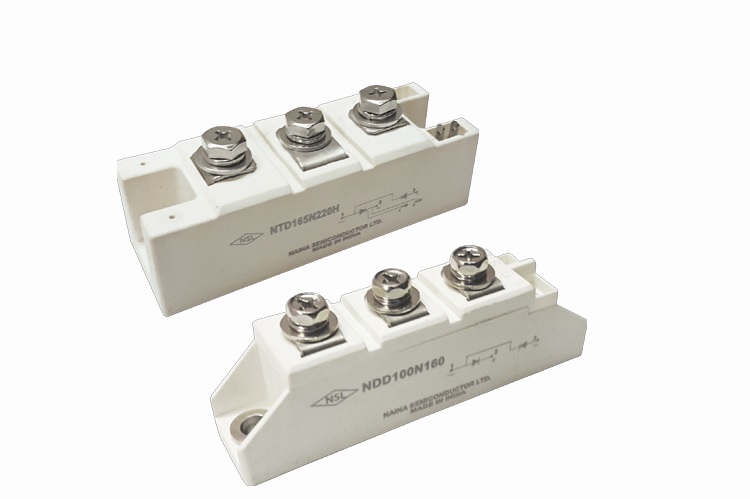The control and management of electric motors and drive systems depend on thyristors in a big way. These semiconductor devices can handle large amounts of power very efficiently, which makes them essential in many industrial settings. Many things use them because they can manage enormous amounts of energy and voltage with a small gadget.
This includes controlling motors and sending power, among other things. With a focus on thyristor diode modules and diode modules, this paper looks at the role of thyristors in motor control and drives. It does this under five main headings.
Understand Thyristors and Diode Modules
Thyristors are a kind of switch-like semiconductor device. They conduct when their gate gets a current pulse and keep performing as long as it is forward-biased. Because they are made to handle high volts and currents, they can be used to control power. Many people use Silicon-Controlled Rectifiers (SCRs), Gate Turn-Off Thyristors (GTOs), and Triacs as thyristors. In many industrial settings, these machines are essential for changing and controlling electricity.
Diode modules and thyristor diode modules are essential parts of power circuits. Diode modules have many diodes linked in specific ways so they can handle high voltages and currents. Thyristor diode modules have both thyristors and diodes in one box. They help control and rectify high-power signals. These modules make it easier to build circuits, make motor control systems more reliable, and handle heat more efficiently.
Thyristors in Motor Speed Control
Changing the speed is one of the primary uses of thyristors in motor control. Controlling the speed of both AC and DC motors is essential for getting the best performance and energy economy. When the input voltage and current are changed, thyristors change the speed of the motor. They are used in variable frequency drives (VFDs) and phase-controlled rectifiers. In a DC motor, for example, an SCR can change the voltage across the rotor, which controls the speed of the motor. Thyristors in VFDs change the AC input’s frequency and amplitude to control an AC motor’s speed.
Thyristor diode modules are very important in this process because they provide consistent rectification and switching. These units ensure that the motor speed is controlled smoothly and precisely, which saves energy and makes operations run more smoothly. Putting thyristors and diodes together in one package makes circuit design easier and makes motor control systems work better overall.
Soft Starters and Thyristors
Thyristors are also very important in the design of electric motor soft starts. Soft starts slowly raise the voltage to the motor, which lowers the inrush current and mechanical stress during start-up. This is very important for heavy-duty motors that need a lot of torque at the start.
Thyristor diode modules decrease motor speed to prevent electrical or mechanical damage during soft starts. This extends motor life, reduces energy use, and improves reliability.
Thyristor diode modules are ideal for soft starters due to their compact size and efficiency. By controlling the motor’s start-up, these components reduce power grid load and extend motor life. These modules soft-start motors safely and cheaply using thyristors and diodes.
Regenerative Brake Systems
Energy recovery and regenerative braking require thyristors. When a motor slows, its kinetic energy is converted into electricity and fed back into the power grid. This is regenerative braking. During this process, thyristors control the flow of current to ensure that the energy is captured and used correctly. This is especially helpful when energy-saving devices, like electric cars and industrial machinery, are essential.
Thyristor diode units improve the performance of regenerative braking systems by making control and rectification more reliable. These units ensure that the recovered energy is changed and sent back into the power system in the best way possible. This cuts down on wasted energy and makes the system work better overall. Because thyristors and diodes are combined in one module, it is easier to build regenerative braking circuits, and they work better, too.
High-Voltage and High-Power Applications
Because they can handle large amounts of power, thyristors are often used in high-voltage direct current (HVDC) power transmission devices. Thyristors direct the change from AC to DC and back in HVDC systems. This makes long-distance power transmission more efficient with fewer losses. Thyristors also control big electric motors and machinery in industrial drives. This gives precise control over power delivery and improves operational efficiency.
Thyristor diode modules work exceptionally well in situations with a lot of voltage and power. These modules are reliable and do a great job of managing heat, so they are perfect for harsh settings. By combining thyristors and diodes, these modules make rectification and control work well. They ensure that HVDC systems and other high-power uses run smoothly.
Conclusion
Regarding motor control and drives, thyristors are essential parts that offer reliable and efficient ways to handle and regulate power. They can precisely control large amounts of energy, which makes them useful for many tasks, such as controlling motor speed and soft starters, as well as regenerative braking and power transfer at high voltages. As businesses change and need cleaner and more long-lasting power sources, thyristors and thyristor diode modules will likely play an even more significant part in making progress in motor control technology and energy management.


